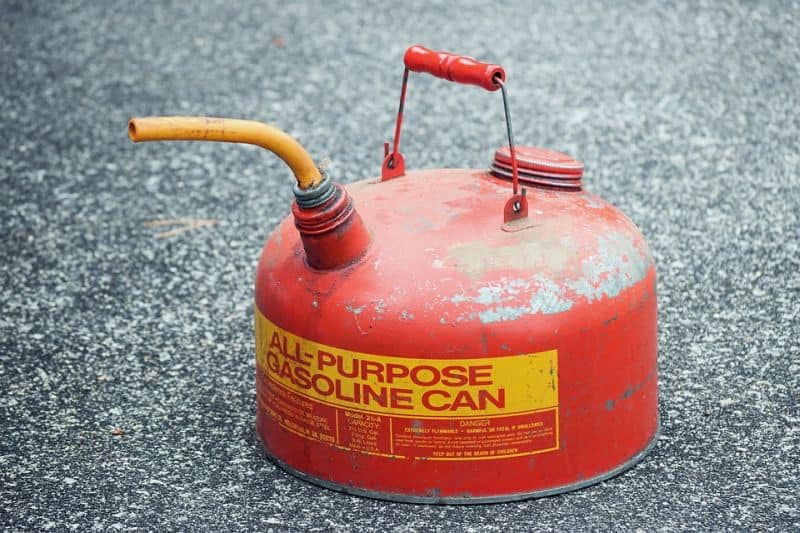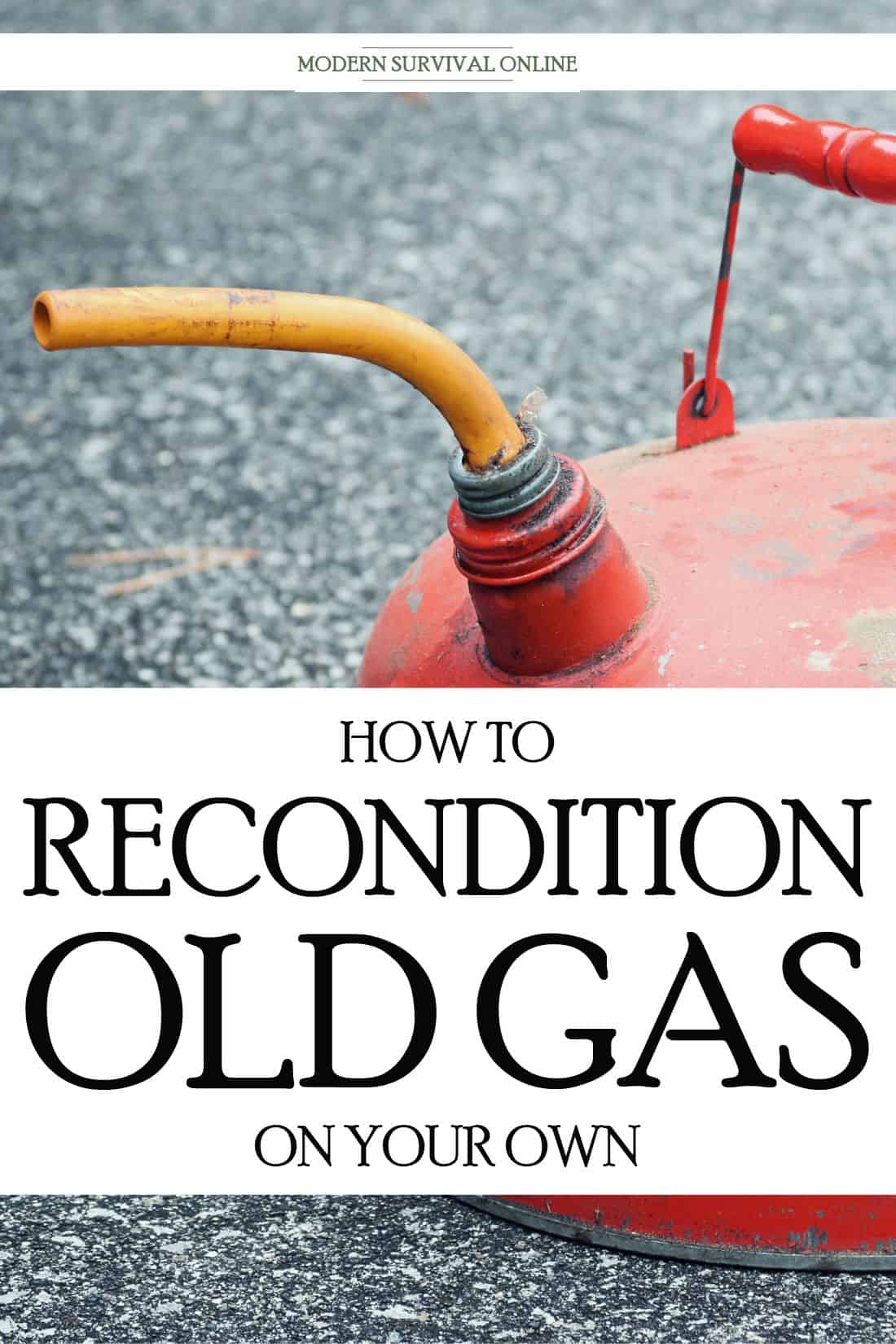Any prepper, from a complete newbie to a grizzled old-hand understands the value of stockpiling vital provisions and supplies before things get bad. You don’t need me to tell you that you won’t be able to run down to the store, and get what you need after society has collapsed.
Most of you probably already have a good supply of the essentials on hand: food, water, ammunition, medical supplies, and just as importantly: gasoline! After all, without that miraculous liquid so many of the machines that we depend on to survive the apocalypse flat-out will not run.

Imagine trying to get through a long-term survival situation with no fuel for your vehicle and no gas for your generator or your power tools. That sinking feeling in your gut is the realization that things have just got a whole lot harder.
You are quite correct in your assessment that these internal combustion engine powered vehicles and devices are an essential part of any prepper’s plan, but their dependency upon gasoline is complicated by the fact that gasoline gets old and loses its combustive properties.
Those gallons and gallons of gas you have stored in cans and in drums have a shelf life a whole lot shorter than you are probably thinking. Three months, maybe six months on the outside, and then your gas is likely no good.
You could say it died of old age. That would certainly be a rude surprise to run into when you are trying to fuel up, and either get the job done or just get out of dodge. If you don’t want to be rotating your gasoline constantly, it seems like you can only prepare for a near-term, short-duration event, right?
Hold that thought, prepper: I will share with you in this article a nearly foolproof method for reconditioning old and worn-out gasoline all on your own with no special equipment, and no special training. Don’t believe me? Well how about you kick the tires and light the fires, and I’ll show you.
Gasoline Shelf-Life and Decay
It sure does suck to learn that your Go-Juice will not just sit patiently and wait forever until the day you need to pour it into a fuel tank. No, it does in fact lose its essential properties due to nothing more than time and depending upon the type and blend of the gasoline this can occur in a shockingly short interlude. Is this your first time hearing about this issue?
It is nothing to be ashamed of; most people drive so regularly and refuel so often the gasoline has no time to go bad in their cars and trucks!
So what exactly are we dealing with? To understand the scope of the issue, we need to learn a little about what type of gas you have.
Far and away the most common type of gasoline for sale in the United States is actually not pure gasoline at all, but instead an ethanol-gasoline blend. This is signified by a number on the fuel type you are buying.
A big letter ‘E’ indicates ethanol, and is followed by a number which indicates the percentage of said ethanol against gasoline in the mix. So E15 is 15% ethanol, E10 is 10% and so on.
I’m not going to get into the deep-dive on the how, why and when of ethanol gasoline excepting the most salient points to our discussion. Namely, ethanol gas sucks because it is extremely corrosive and it also goes bad far, far more quickly than pure gasoline making your job of storing it for the long haul even more difficult.
How much faster? Most ethanol-blended gasolines have a maximum shelf life of only 3 months. No longer. The more ethanol there is in the mixture the shorter the shelf life, so E15 or E20 will go bad far faster than E10, in perhaps as little as one month.
Contrast this with pure gasoline which has a useful, reliable shelf life of around 6 months. Unfortunately pure gasoline is getting harder and harder to find at common gas stations.
So, no matter what kind of gas you have and how you sort it is definitely going to go bad eventually, and probably much quicker than you were suspecting.
But there was a lot more to this conversation than just shelf life when it comes to reconditioning old gasoline, and this is a part you cannot get wrong. I’ll tell you about it in the next section.
The Critical Difference Between Old and Bad
Before you ever, ever even think of trying to recondition old gasoline, you must understand the difference between gas that is just old, and gas that has actually gone bad, either due to certain chemical processes beyond your control, contamination, or something else entirely.
You can recondition older gasoline, but no amount of reconditioning will bring truly bad gas back to life and all you’ll do is waste time, fuel and risk severely damaging whatever engine you put it in.
Here are a couple of things you need to watch out for in order to determine whether you have old gas (salvageable) or bad gas (can’t be helped):
- Ethanol-blended gasolines are a major culprit when it comes to going bad. Ethanol-blend gas can actually separate over time, meaning the ethanol separates from the gasoline, and then that ethanol attracts water in great quantity, contaminating the mixture. Regardless of whether or not it has been contaminated with water, separated ethanol gas cannot be reconditioned.
- Only pure gasoline that has gotten old and lost its combustive properties due to age can be reconditioned.
- To check the status of the suspect gasoline, draw a sample in a clear glass vial, and then compare it with gasoline that you know is new and fresh in a similar vial. If a gasoline is pure gas and is just old, it should look like the new gas only a few shades darker in color.
- Gasoline that shows obvious layers that looks something like oil floating on water means you are dealing with ethanol-blended gas; no-go. Also if the gas has a strange color, a cloudy appearance or has obvious particles floating in it that means it’s contaminated and is also no good.
- In short:
- Clear, uniform (but darker) color, uniform consistency – GOOD FOR RECONDITIONING
- Obvious layers, uneven color, cloudy or gritty – NO GOOD FOR RECONDITIONING
Trust me; don’t even try to recondition suspect gasoline that has any of the negative characteristics above. It is going to end in disaster, and you’ll have no one but yourself to blame.
How to Recondition Old Gas
Now on to the fun part. Reconditioning old gasoline is super simple, almost foolproof. If you will recall the gas loses its punch because the combustion elements in the gasoline break down and evaporate over time. This makes the gasoline less volatile, lowering its octane rating.
What you will be left with is gasoline that has chemically sorted itself into lighter components and heavier components. I will spare you a lengthy science lecture, but suffice to say there is one easy trick to get the gas usable again.
All you need to do is combine 50% of your old gas with 50% new gas, or gas that is at least usable. Give it a good shake, and you are ready to go. That is really all there is to it. No fuss, no muss.
The reason this works is because you are adding fresh combustive elements back into the old gasoline, reconstituting it in a way. Although the resulting mixture has a lower octane rating due to dilution than the fresh gas you are adding.
Don’t get swept up in the math, as chances are it will work just fine even if the engine you fuel with this new mixture of reconditioned gasoline does not idle or run as smoothly.
What is important is that you are stretching your supply, and not wasting resources due to old age or a short shelf-life. Everything is a trade-off, and you will have to determine if the situation is dire enough for you to put this slightly sketchy gas in your motor.
I have done this myself many times with absolutely no ill-effects in the short-term, although I don’t feed any of my engines a strict diet of only reconditioned gasoline.
If I have a couple of old gallons that I wasn’t diligent enough in rotating or forgot about, I just spruce them up by mixing them with fresh gasoline, and I can at least recoup a little bit of money.
Remember: This trick only works on pure, uncontaminated gasoline! Not ethanol-blends!
Prepping Pro-Tip #1: Consider “Storage Gas” for Your Stash
Here is a tip from your dear Uncle Tim, one that vintage car owners have known about for some time. If you search hard enough you can find a supplier of especially long-lived gasoline that is typically called “storage gas” since its shelf-life blows all common varieties away.
Where you could get anywhere from a month to three months with an ethanol-blended gas and six months on the outside with pure gasoline, storage gas has a shelf life of anywhere from one year to two whole years. That is unbeatable!
As you are probably thinking, storage gas is expensive, or at least expensive compared to common fuel you can get in your neighborhood, but when you consider that this is a contingency item for your survival plan that is going to hopefully help you survive a massive SHTF situation it is a small price to pay.
Also, consider how much your time is worth: This stuff will save you an awful lot of fussing around, and many hours of rotating your gasoline just so you don’t see your money go down the drain.
Prepping Pro-Tip #2: Use Long-Life Fuel Stabilizers for Storing Conventional Gas
There is another trick that one of your uncles or perhaps your father knew about when it came to storing fuel, and that was the adding of specialty fuel stabilizers that can greatly extend the shelf-life of conventional gasoline.
One of the most common and popular is Sta-Bil, and this stuff really does work. You need to buy a specific formulation depending on whether or not you have ethanol-blend gas or pure gasoline, but it really does work as described.
Simply mix it in with your gasoline as soon as you can after purchasing it, and you can expect anywhere from three months to one whole year of additional shelf life. That is a bargain for a little bottle!
Now, there are some caveats. First, diesel fuel additives work in direct proportion to how fresh the host gasoline is. You cannot add it to gasoline that is on its last legs and get any meaningful extra life out of it. If you get gas that has been freshly delivered to the gas station and then add Sta-Bil to it as soon as you get it home you will get maximum shelf-life.
It is also worth mentioning that, contrary to old wives’ tales, you cannot add this stuff to old gasoline and expect to bring it back to life. It definitely doesn’t work to bring contaminated or genuinely bad gasoline back to life. Again, it will only work on good gasoline!
Conclusion
Old gasoline need not go to waste. So long as your gasoline is just old, and is not truly deteriorated or contaminated by foreign substances, it is entirely possible to rejuvenate this vintage gasoline by mixing it in equal parts with fresher, usable gas. The resulting mixture will work in the majority of engines even if it runs a little rough or unevenly.
This is a great trick to prevent your investment from going to waste, or to make good use of salvaged gas that is otherwise a non-starter.

via Modern Survival Online https://ift.tt/2LhbHUS
No comments:
Post a Comment